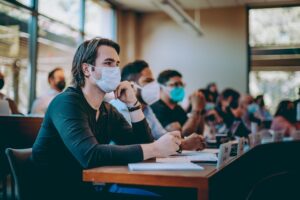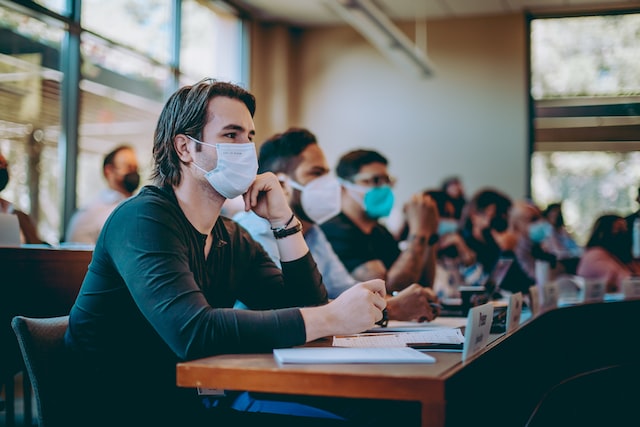“Flu and RSV, mask almost useless”

TORONTO – Masks essential to curb the spread of Covid-19, but almost useless in the presence of influenza and respiratory syncytial virus (RSV): this is what emerges from a document prepared by Public Health Ontario at the request of the Chief Medical Officer of Health, Dr. Kieran Moore, last November but made public only today, when it was published by the Canadian Press.
The brief provides a summary of the evidence on which Dr Moore made his decision not to go further than a “strong” recommendation on the use of masks in mid-November. The effects of masking on transmission of Covid-19 are strong, the late November brief notes, but with influenza and respiratory syncytial virus, or RSV, circulating at the time as well as Covid-19, the benefits of masking use of machines have become less clear, according to the expert group that drafted the document.
In mid-November, the respiratory viruses – which mainly affected the very young – put the intensive care units and emergency departments of the main pediatric hospitals in the province in difficulty, which recorded historic volumes from October to December. The surge forced children’s hospitals in Toronto, Ottawa, Hamilton and London to cancel scheduled surgeries to free up staff and beds to deal with the problem.
On November 14, Moore held a press conference in which he “strongly” recommended that the public wear masks indoors to protect children from circulating respiratory viruses, announcing that he was reviewing the possibility of re-imposing mask requirements in schools. That same day, Moore’s office asked Ontario Public Health for help, asking for a summary of the evidence on the effectiveness of mask wearing, particularly among children and youth, in the context of circulating influenza, RSV and Covid -19.
Ten days later, Public Health Ontario responded with a fourteen-page brief. “We have not been able to identify data on the effectiveness of community-level masking in preventing influenza or RSV transmission” the paper underlined, adding, however, that “widespread use can, however, be expected of the mask in general or targeted populations reduces the transmission rate of viral respiratory pathogens in the community”. From there, Dr. Moore’s decision to limit himself to a strong recommendation of the use of masks.
However, in view of a possible decision to make masks mandatory again, the experts also consulted a series of surveys related to the public acceptability of any new “mandates”. In a poll conducted on Nov. 8, 53 percent of respondents agreed that mask requirements should be reintroduced in Ontario. In another, by Nanos Research, conducted for CTV from October 30 to November 2, 69% of respondents would have supported the return of the obligation to wear masks. Obligatory which, however, as we know, was not reintroduced precisely on the basis of that document.
As to whether the brief has not been disclosed, Public Health Ontario explained that “the document has not been shared publicly as it was in response to a request (from Moore’s office) and not intended as a standalone document”. Moore, in turn, did not answer reporters’ questions about why the document was never made public.
Photo by Joel Danielson from Unsplash



